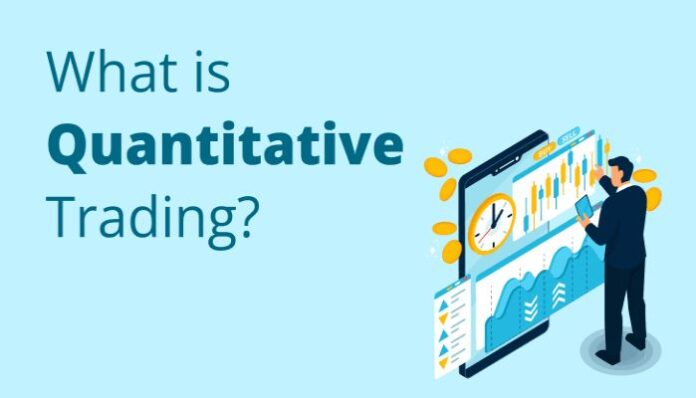Quantitative trading, or quant trading, has grown from a niche corner of Wall Street to a mainstream career path pursued by finance professionals, engineers, mathematicians, and even curious self-learners. It’s not hard to see why. The idea of combining data, math, and code to build automated strategies that trade the markets around the clock is both intellectually exciting and financially rewarding.
If you’ve ever wondered how to become a quantitative trader, this guide will walk you through the key steps—from learning the basics to building advanced strategies. We’ll also cover what skills you need, what tools are commonly used, and how you can set yourself apart in this highly competitive field.
Whether you’re starting from scratch or already know a bit of finance or coding, having access to the right resources, like an in-depth algorithmic trading course, can fast-track your learning and help you avoid beginner mistakes.
What Does a Quantitative Trader Do?
A quantitative trader designs and implements mathematical models to identify and capitalize on trading opportunities. Unlike traditional discretionary traders who rely on gut feeling or experience, quants use data, statistical analysis, and algorithms to make decisions.
They might build models that predict price movements, spot arbitrage opportunities, or develop market-making strategies. And they do this across asset classes—from stocks and futures to crypto and FX.
Quant traders typically work at hedge funds, prop trading firms, investment banks, or run their own automated strategies.
Step 1: Understand the Core Concepts
Before diving into technical skills, it’s essential to understand the pillars that make up quant trading. These include:
- Market mechanics: How orders are placed and matched, what affects price, what moves liquidity.
- Financial instruments: Know the difference between stocks, options, futures, ETFs, and how they trade.
- Quantitative analysis: Learn how to use statistical techniques to make sense of price data.
Books, blogs, and podcasts are a good starting point. However, structured resources—like a hands-on algorithmic trading course—can help you cover more ground quickly.
Step 2: Learn to Code (Start With Python)
Coding is non-negotiable in quantitative trading. Python is the most widely used language in this space, thanks to its simplicity and vast ecosystem of data science libraries.
Start by learning:
- Basics: variables, loops, conditionals, and functions
- Data handling: using pandas to load and manipulate time series data
- Visualization: using matplotlib or plotly to visualize market behavior
- API usage: connecting to brokers or pulling live data from APIs
Once you’re comfortable with Python, you can explore more performance-focused tools like C++ or Java if needed.
Step 3: Build a Foundation in Math & Statistics
Quant trading is rooted in numbers. While you don’t need a PhD in math, a strong foundation in statistics, linear algebra, and probability is essential.
Some key concepts to focus on:
- Mean, median, standard deviation, correlation
- Regression analysis
- Time series analysis
- Random walks and Brownian motion
- Hypothesis testing
These concepts help you evaluate whether your trading ideas are statistically sound or just random noise.
Step 4: Study Quantitative Trading Strategies
Once you’ve got your math and coding basics down, start exploring actual trading strategies. This is where theory meets application.
Here are a few popular quant strategies to study and experiment with:
- Mean reversion: Betting that prices will revert to the mean after an extreme move.
- Momentum: Riding the trend in assets showing strong recent performance.
- Pairs trading: Identifying two historically correlated assets and trading the divergence.
- Statistical arbitrage: Looking for short-term mispricings between correlated instruments.
As you study these, try building and backtesting them yourself. Use historical data and tools like Backtrader or QuantConnect to simulate performance.
Step 5: Backtesting and Model Validation
Building a strategy is just the beginning. To know whether it actually works, you need to backtest it on historical data. A good backtest simulates how your model would’ve performed in real markets, taking into account:
- Slippage
- Transaction costs
- Latency
- Market impact
But beware—backtesting can easily mislead you if not done properly. Overfitting your model to past data can make it look great in hindsight, but it may fail in live markets. Always reserve some data for out-of-sample testing and use walk-forward validation when possible.
Step 6: Learn Advanced Algorithmic Trading Techniques
Once you’ve tested a few simple strategies, you’ll likely hit a wall. That’s when it’s time to move into advanced algorithmic trading.
Advanced topics may include:
- Machine learning for feature selection and prediction
- Portfolio optimization
- Execution algorithms (TWAP, VWAP, iceberg orders)
- Event-driven trading (news, earnings reports)
- High-frequency trading (HFT) principles
These topics require a deeper understanding of both finance and technology, and often benefit from structured learning through a specialized course or mentorship program.
Step 7: Choose a Platform or Broker
To trade live, you’ll need access to a trading platform or API. Some popular platforms for quants include:
- Interactive Brokers: A solid all-rounder with a powerful API
- Alpaca: Commission-free and beginner-friendly
- QuantConnect: Ideal for cloud-based strategy development and testing
- MetaTrader: Common in forex markets
Make sure your broker supports paper trading so you can test live strategies without risking real money.
Step 8: Start Small and Iterate
Don’t rush into full-scale trading with all your savings. Start small. Trade with capital you can afford to lose. Monitor your performance, identify weaknesses, and keep improving.
Even experienced quants constantly refine their models. Think of your trading system as a product that evolves over time.
Final Thoughts
Becoming a successful quant trader is not an overnight achievement. It’s a long-term journey that blends curiosity, analytical thinking, and technical skills. The path might seem complex at first, but with consistent effort, you can go from a curious learner to someone confidently building and running their own automated trading systems.
Remember: Start with the fundamentals, build practical skills one layer at a time, and don’t be afraid to fail and learn.
If you’re serious about this career path and want to avoid common pitfalls, taking a well-structured algorithmic trading course can help you stay focused, learn faster, and get hands-on practice with real-world strategies.
Also Read: The Crossroads of Crypto and Commerce: How Bitcoin is Revolutionizing Global Business







